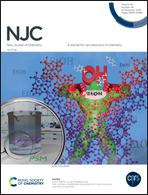Degradation of tetracycline by persulfate oxidation promoted by iron-modified biochar
Abstract
The accumulation of tetracycline (TC) in the aquatic environment increases the risk to ecosystems and human health due to its potential biological toxicity. The development of carbon-based materials with desirable features, including low cost, easy isolation and excellent peroxymonosulfate (PMS) activation performance, to generate reactive oxygen species toward TC degradation is essential but remains a great challenge. Herein, sustainable biomass kelp-derived self-nitrogen-doped biochar-stabilized Fe nanoparticles were developed for PMS activation toward TC degradation. The influence of calcination temperature on their microstructure was studied to further optimize the TC degradation performance. The Fe@BC/PMS system exhibited optimal performance in activating PMS to degrade TC, with a removal efficiency of 93% within 50 min. Additionally, the magnetic Fe@BC/PMS had robust recycling stability because of the enhanced interaction between Fe2+/Fe3+ and graphitized biochar. The characterization results indicated the participation of Fe nanoparticles, graphite nitrogen, and a direct electron transfer process in PMS activation. Quenching experiments and electron paramagnetic resonance analyses revealed a combination of radical and non-radical pathways involved in TC degradation, with the non-radical pathway playing a dominant role. This study offers a facile and low-cost strategy to prepare an efficient PMS activator for antibiotic wastewater remediation.



 Please wait while we load your content...
Please wait while we load your content...